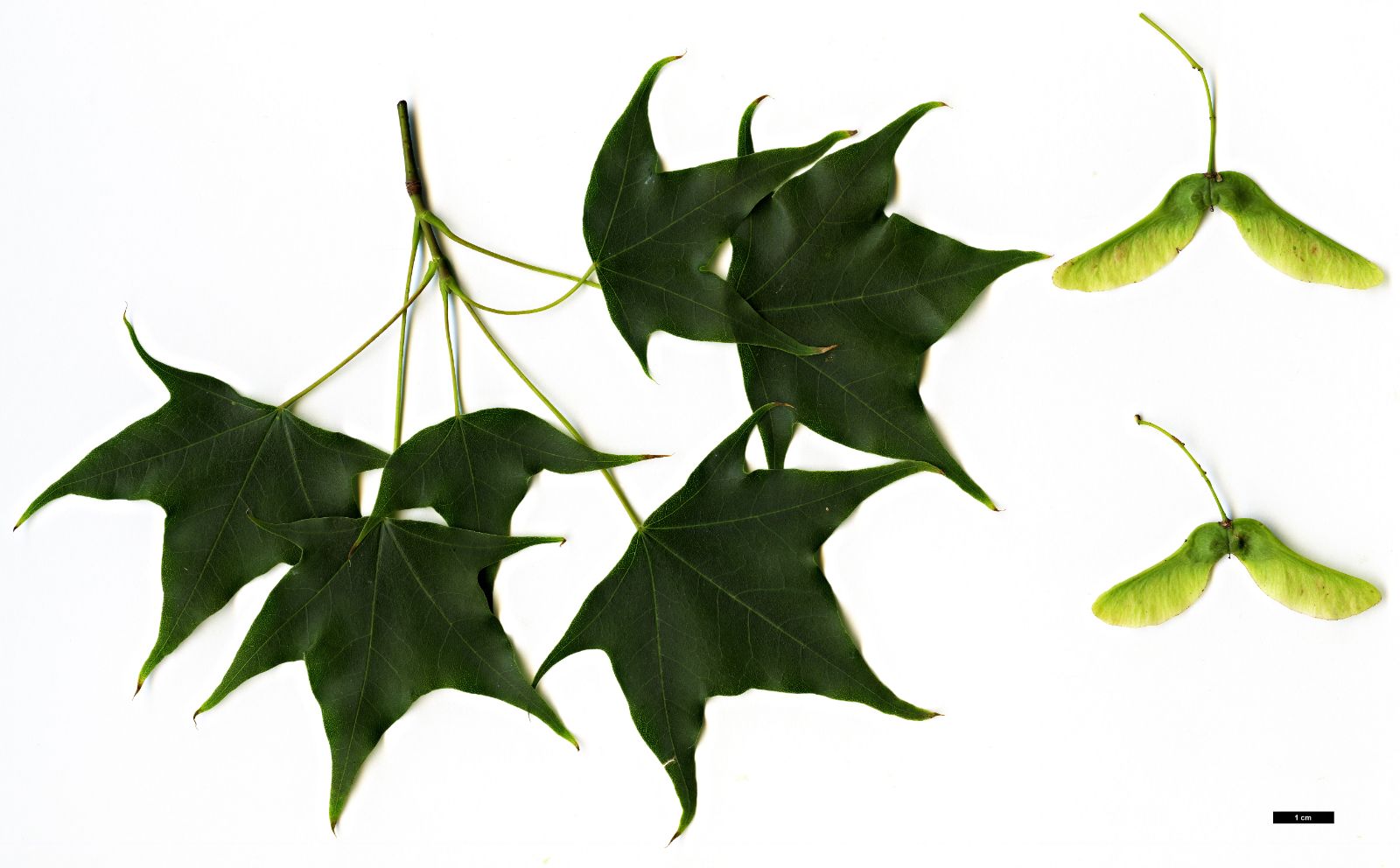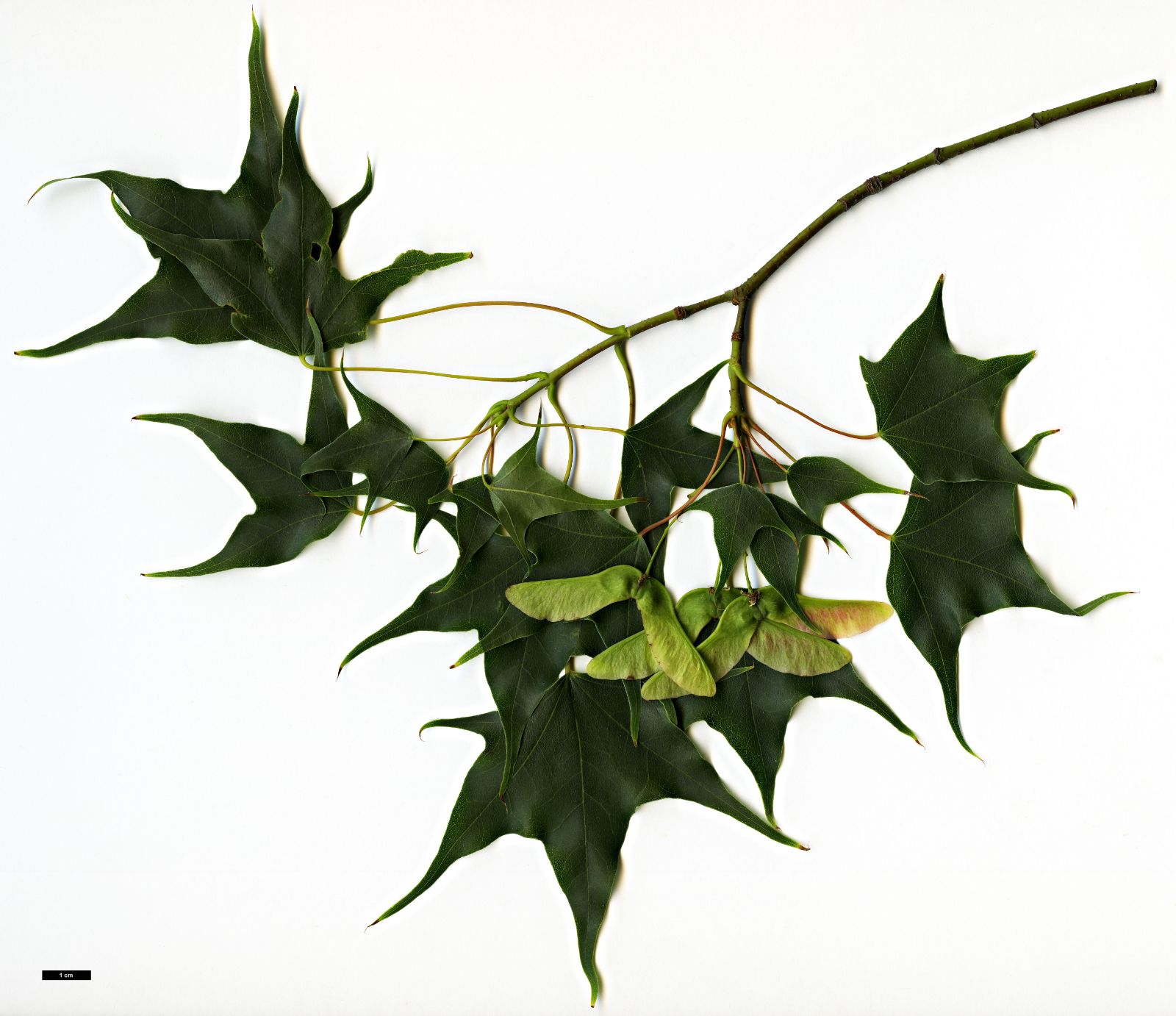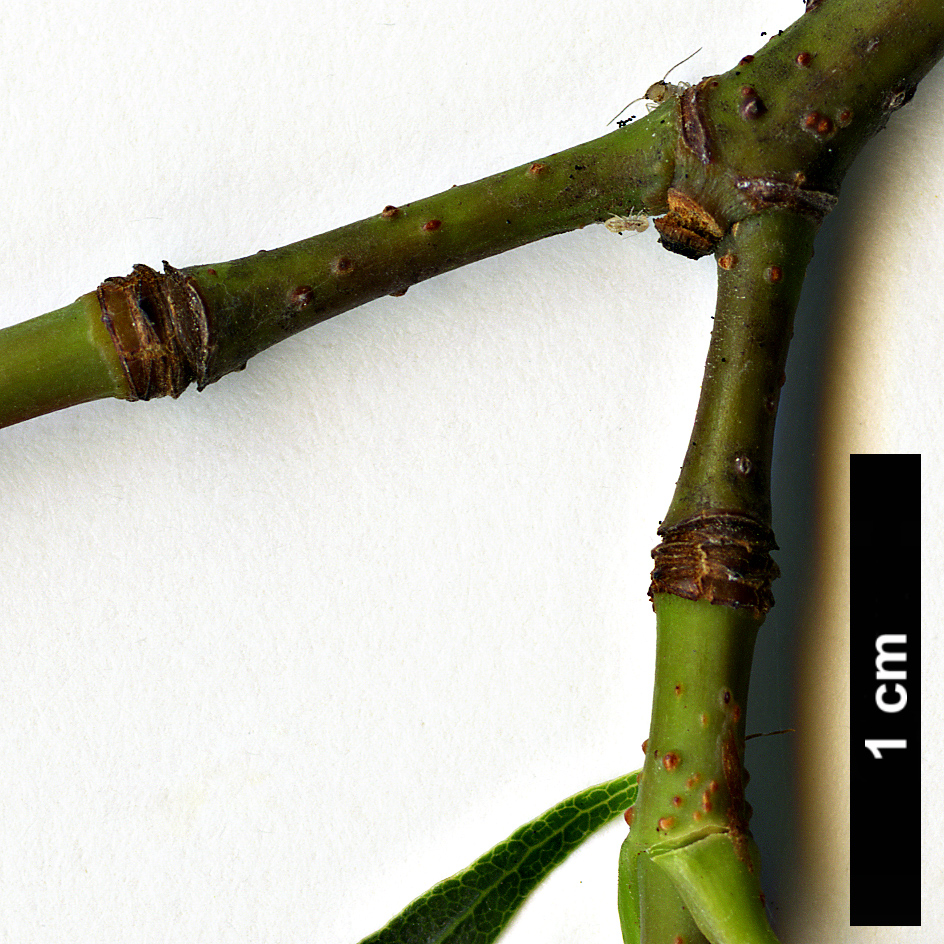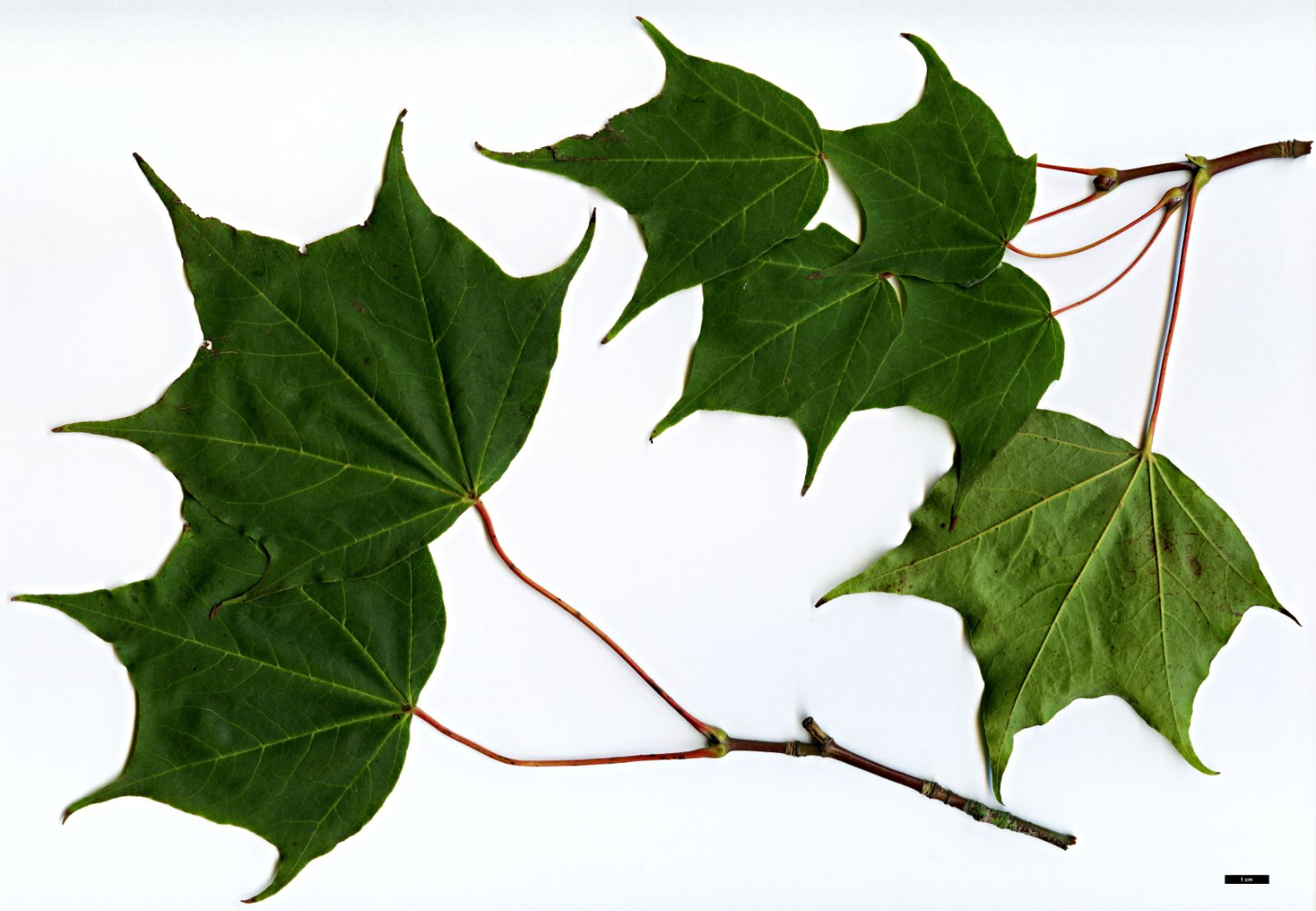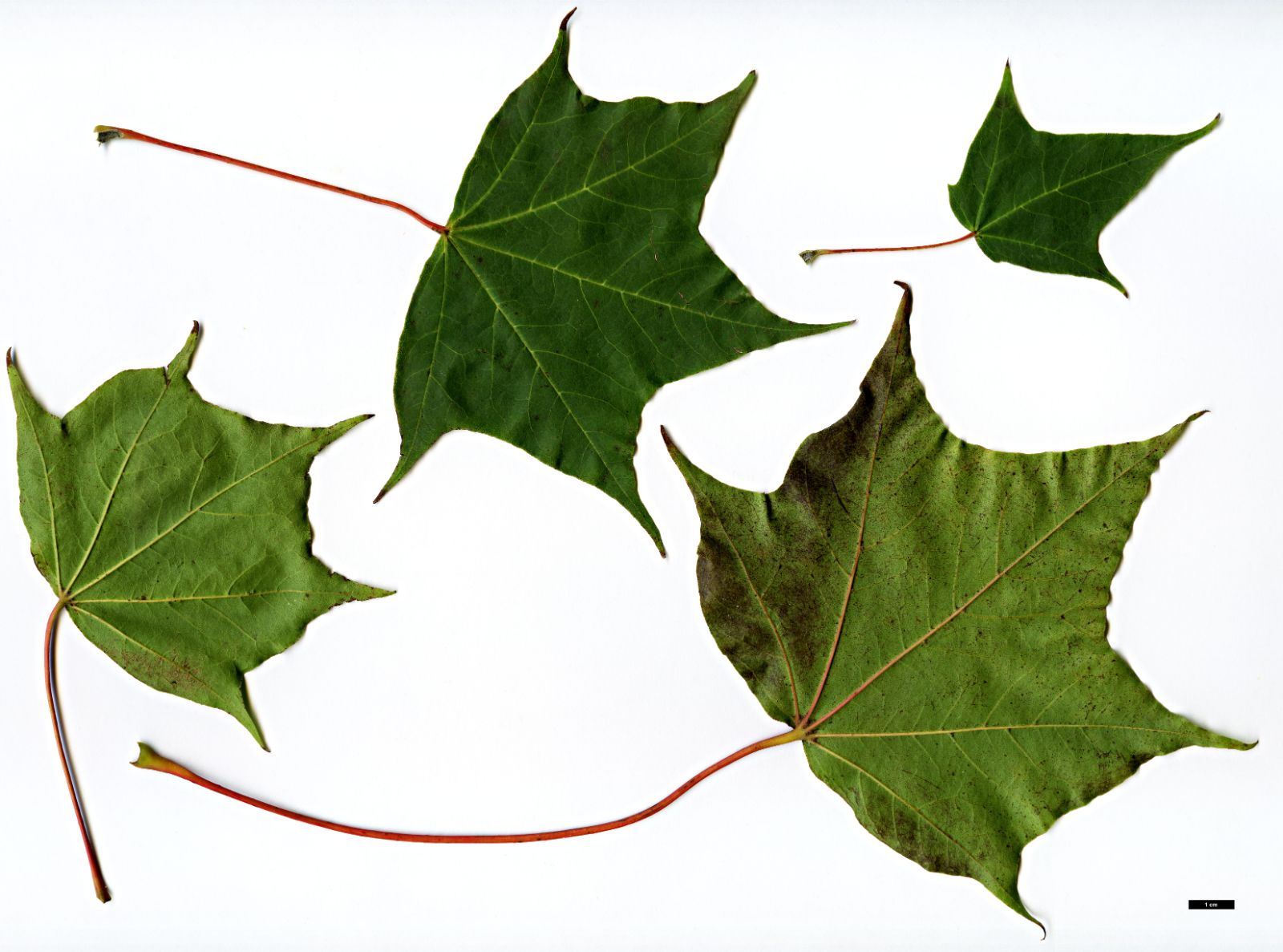Acer shenkanense
Sponsor
Kindly sponsored by
a member of the International Dendrology Society
Credits
Dan Crowley (2020)
Recommended citation
Crowley, D. (2020), 'Acer shenkanense' from the website Trees and Shrubs Online (treesandshrubsonline.
Genus
- Acer
- Sect. Platanoidea
Synonyms
- Acer cappadocicum Gleditsch f. tricaudatum (Rehder ex Veitch) Rehder
- Acer cappadocicum var. tricaudatum (Rehder ex Veitch) Rehder
- Acer cappadocicum subsp. sinicum var. tricaudatum (Rehder ex Veitch) Rehder
- Acer cappadocicum subsp. trilobum A.E. Murray, p.p
- Acer laetum C. A. Meyer var. tricaudatum Rehder ex Veitch
- Acer tricaudatum W.P. Fang & C.C. Fu
Other taxa in genus
- Acer acuminatum
- Acer amplum
- Acer argutum
- Acer barbinerve
- Acer buergerianum
- Acer caesium
- Acer calcaratum
- Acer campbellii
- Acer campestre
- Acer 'Candy Stripe'
- Acer capillipes
- Acer cappadocicum
- Acer carpinifolium
- Acer 'Cascade'
- Acer caudatum
- Acer ceriferum
- Acer chapaense
- Acer chienii
- Acer circinatum
- Acer cissifolium
- Acer × conspicuum
- Acer cordatum
- Acer coriaceifolium
- Acer × coriaceum
- Acer crataegifolium
- Acer davidii
- Acer diabolicum
- Acer distylum
- Acer divergens
- Acer duplicatoserratum
- Acer elegantulum
- Acer erianthum
- Acer 'Esk Flamingo'
- Acer fargesii
- Acer fenzelianum
- Acer flabellatum
- Acer forrestii
- Acer franchetii
- Acer × freemanii
- Acer fulvescens
- Acer 'Gimborn'
- Acer ginnala
- Acer glabrum
- Acer 'Gold Coin'
- Acer granatense
- Acer grandidentatum
- Acer griseum
- Acer heldreichii
- Acer henryi
- Acer × hillieri
- Acer hookeri
- Acer hyrcanum
- Acer japonicum
- Acer kawakamii
- Acer komarovii
- Acer laevigatum
- Acer laurinum
- Acer laxiflorum
- Acer lobelii
- Acer longipes
- Acer macrophyllum
- Acer mandshuricum
- Acer maximowiczianum
- Acer maximowiczii
- Acer metcalfii
- Acer miaotaiense
- Acer micranthum
- Acer 'Mindavi'
- Acer 'Minorient'
- Acer miyabei
- Acer miyabei × campestre
- Acer monspessulanum
- Acer morifolium
- Acer 'Mozart'
- Acer oblongum
- Acer obtusifolium
- Acer okamotoanum
- Acer oliverianum
- Acer opalus
- Acer orientale
- Acer palmatum
- Acer papilio
- Acer pauciflorum
- Acer pectinatum
- Acer pensylvanicum
- Acer pentaphyllum
- Acer pentapotamicum
- Acer pictum
- Acer pilosum
- Acer pinnatinervium
- Acer platanoides
- Acer platanoides × amplum
- Acer platanoides × truncatum
- Acer × pseudoheldreichii
- Acer pseudoplatanus
- Acer pseudosieboldianum
- Acer pubinerve
- Acer pycnanthum
- Acer rubescens
- Acer rubrum
- Acer rufinerve
- Acer saccharinum
- Acer saccharum
- Acer sempervirens
- Acer 'Serpentine'
- Acer serrulatum
- Acer sieboldianum
- Acer sikkimense
- Acer 'Silver Cardinal'
- Acer 'Silver Ghost'
- Acer sinense
- Acer sinopurpurascens
- Acer spicatum
- Acer stachyophyllum
- Acer taronense
- Acer tataricum
- Acer tegmentosum
- Acer tenellum
- Acer tetramerum
- Acer tibetense
- Acer tonkinense
- Acer triflorum
- Acer truncatum
- Acer tschonoskii
- Acer turkestanicum
- Acer tutcheri
- Acer ukurunduense
- Acer velutinum
- Acer wardii
- Acer 'White Tigress'
- Acer wilsonii
- Acer × zoeschense
A deciduous tree to 10 m in the wild. Bark grey to brown. Branchlets glabrous, green, turning grey to brown and woody only after several years. Buds ovoid to subglobose, with 4 to 10 pairs of imbricate scales. Leaves chartaceous, ovate to narrowly pentagonal in outline, base subcordate to rounded, 3– to 5-lobed, (4–)5–10 × 4–12 cm, margins entire, lobes ovate, apically acuminate to caudate, upper surface mid-green, lower surface pale green, glabrous or pubescent; petiole 7–12 cm long, slender, glabrous, exuding milky sap when broken; autumn colour yellow. Inflorescence terminal, corymbose, many flowered. Flowers yellowish-green, 5-merous, usually andromonoecious, sepals obovate, ~0.2 cm long, petals oblong to obovate, ~0.5 cm long, stamens 6 to 8. Samaras 2–5 cm long, wings spreading acutely or erect. Nutlets slightly convex, impressed on one side. Flowering in April and May, fruiting in September and October. (van Gelderen & van Gelderen 1999; Xu et al. 2008).
Distribution China South eastern Gansu, western Hubei, southern Shaanxi, north and north western Sichuan
Habitat Mixed forests along streams and valleys between 700 and 3000 m asl.
USDA Hardiness Zone 7-8
RHS Hardiness Rating H5
Conservation status Least concern (LC)
Taxonomic note This species was treated as Acer cappadocicum subsp. sinicum var. tricaudatum by van Gelderen et al. (1994) (although the epithet shenkanense is not referenced in that work), but at specific rank as A. shenkanense by Xu et al. (2008), whose treatment is followed here.
A relatively new name assigned to plants in cultivation, several examples of both mature and recent plantings of Acer shenkanense were previously grown under the name of A. cappadocicum subsp. sinicum var. tricaudatum, though there is now a general acceptance among (at least parts of) the maple fraternity that it is better treated as distinct from A. cappadocicum, at least until relationships within that species complex have been satisfactorily resolved. Interestingly, any reference to A. shenkanense is is entirely absent from van Gelderen et al. (1994), either as a synonym of A. cappadocicum subsp. sinicum var. tricaudatum or any other taxon, despite being described as a species in 1981 Xu et al. (2008).
The species was originally introduced by Ernest Wilson for Veitch’s Nurseries in 1901 under W 234a (Veitch seed no 728) and listed by Sargent (1917) as A. cappadocicum var. sinicum, though this collection is clearly referable to A. shenkanense. This collection is represented by the UK and Ireland Champion, which as a grafted plant at Westonbirt Arboretum, Gloucestershire, has made a slender tree of 22 m (The Tree Register 2020), significantly surpassing the size the species is understood to achieve in its natural habitat. This tree has been propagated and is likely the source of many plants circulated over the last twenty to thirty years in the United Kingdom and Europe under the name A. cappadocicum subsp. sinicum var. tricaudatum. Meanwhile W 1358, collected in western Sichuan in 1908 Sargent (1913), is one of several Wilson maples repropagated and circulated among collections. A grafted plant grows along the Holly Walk at Kew, while an original remains at RBG Edinburgh where it has been joined by a young graft (Royal Botanic Garden Edinburgh 2018).
The earliest introductions since Wilson’s are those of SICH 2301 and 2399. Both were made in Sichuan in 2003, from Lixian and Juizhaigou Counties respectively. Their identity, like that of a number of the SICH section Platanoidea introductions has been confused and Erskine (2012) found them growing only under A. longipes subsp. amplum (here treated at species rank) and A. cappadocicum subsp. sinicum. At Kew, specimens of SICH 2301 grow as both single and multistemmed plants with a fairly upright form, while SICH 2399 grows as a squat, broad spreading plant. Another specimen on Breakheart Hill in the Valley Gardens, Windsor grows on a single stem, though with a somewhat scruffy crown. SICH 2301 also grows at Quarryhill Botanical Garden, while the species has also been introduced to eastern North America, from NACPEC 10–027, collected in Shaanxi Provence in 2010, now growing at the Arnold Arboretum, Boston and the Morris Arboretum, Philadelphia. Although when seen in October 2019 some foliage on the NACPEC 10–027 plants appeared slightly atypical for A. shenkanense, this is considered only a juvenile trait and the herbarium specimen of this collection is clearly referable to the species (pers. obs. 2019). On the west coast of North America a collection made by Dan Hinkley under DJHC 0324 as this species grows at the Hoyt Arboretum, Oregon. From 3000 m in northeastern Yunnan, this record would represent an extension of the species’ range if its identity is confirmed, though Hinkley’s description of a parent tree with ‘foliage five lobed with accentuated acuminate tips’ warrants further investigation.

